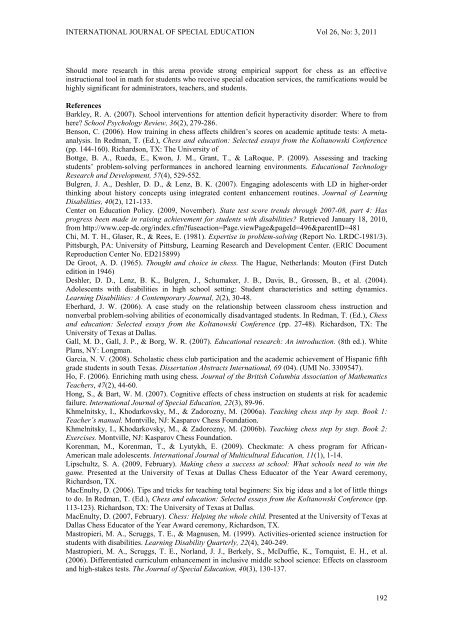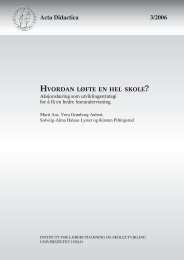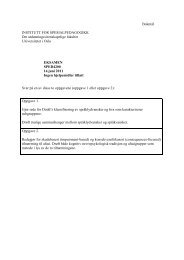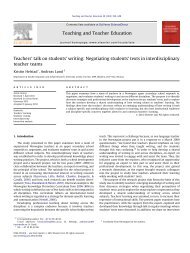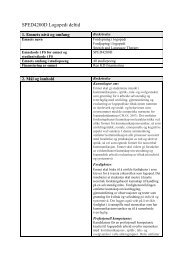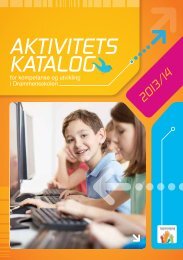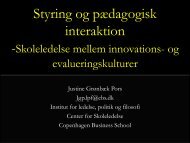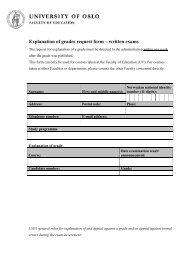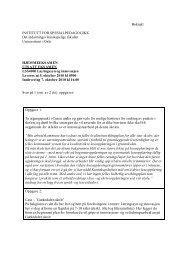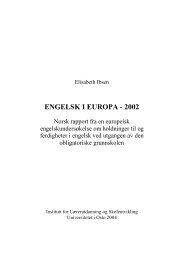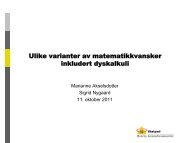International Journal Special Education
International Journal Special Education
International Journal Special Education
Create successful ePaper yourself
Turn your PDF publications into a flip-book with our unique Google optimized e-Paper software.
INTERNATIONAL JOURNAL OF SPECIAL EDUCATION Vol 26, No: 3, 2011Should more research in this arena provide strong empirical support for chess as an effectiveinstructional tool in math for students who receive special education services, the ramifications would behighly significant for administrators, teachers, and students.ReferencesBarkley, R. A. (2007). School interventions for attention deficit hyperactivity disorder: Where to fromhere? School Psychology Review, 36(2), 279-286.Benson, C. (2006). How training in chess affects children’s scores on academic aptitude tests: A metaanalysis.In Redman, T. (Ed.), Chess and education: Selected essays from the Koltanowski Conference(pp. 144-160). Richardson, TX: The University ofBottge, B. A., Rueda, E., Kwon, J. M., Grant, T., & LaRoque, P. (2009). Assessing and trackingstudents’ problem-solving performances in anchored learning environments. <strong>Education</strong>al TechnologyResearch and Development, 57(4), 529-552.Bulgren, J. A., Deshler, D. D., & Lenz, B. K. (2007). Engaging adolescents with LD in higher-orderthinking about history concepts using integrated content enhancement routines. <strong>Journal</strong> of LearningDisabilities, 40(2), 121-133.Center on <strong>Education</strong> Policy. (2009, November). State test score trends through 2007-08, part 4: Hasprogress been made in raising achievement for students with disabilities? Retrieved January 18, 2010,from http://www.cep-dc.org/index.cfm?fuseaction=Page.viewPage&pageId=496&parentID=481Chi, M. T. H., Glaser, R., & Rees, E. (1981). Expertise in problem-solving (Report No. LRDC-1981/3).Pittsburgh, PA: University of Pittsburg, Learning Research and Development Center. (ERIC DocumentReproduction Center No. ED215899)De Groot, A. D. (1965). Thought and choice in chess. The Hague, Netherlands: Mouton (First Dutchedition in 1946)Deshler, D. D., Lenz, B. K., Bulgren, J., Schumaker, J. B., Davis, B., Grossen, B., et al. (2004).Adolescents with disabilities in high school setting: Student characteristics and setting dynamics.Learning Disabilities: A Contemporary <strong>Journal</strong>, 2(2), 30-48.Eberhard, J. W. (2006). A case study on the relationship between classroom chess instruction andnonverbal problem-solving abilities of economically disadvantaged students. In Redman, T. (Ed.), Chessand education: Selected essays from the Koltanowski Conference (pp. 27-48). Richardson, TX: TheUniversity of Texas at Dallas.Gall, M. D., Gall, J. P., & Borg, W. R. (2007). <strong>Education</strong>al research: An introduction. (8th ed.). WhitePlans, NY: Longman.Garcia, N. V. (2008). Scholastic chess club participation and the academic achievement of Hispanic fifthgrade students in south Texas. Dissertation Abstracts <strong>International</strong>, 69 (04). (UMI No. 3309547).Ho, F. (2006). Enriching math using chess. <strong>Journal</strong> of the British Columbia Association of MathematicsTeachers, 47(2), 44-60.Hong, S., & Bart, W. M. (2007). Cognitive effects of chess instruction on students at risk for academicfailure. <strong>International</strong> <strong>Journal</strong> of <strong>Special</strong> <strong>Education</strong>, 22(3), 89-96.Khmelnitsky, I., Khodarkovsky, M., & Zadorozny, M. (2006a). Teaching chess step by step. Book 1:Teacher’s manual. Montville, NJ: Kasparov Chess Foundation.Khmelnitsky, I., Khodarkovsky, M., & Zadorozny, M. (2006b). Teaching chess step by step. Book 2:Exercises. Montville, NJ: Kasparov Chess Foundation.Korenman, M., Korenman, T., & Lyutykh, E. (2009). Checkmate: A chess program for African-American male adolescents. <strong>International</strong> <strong>Journal</strong> of Multicultural <strong>Education</strong>, 11(1), 1-14.Lipschultz, S. A. (2009, February). Making chess a success at school: What schools need to win thegame. Presented at the University of Texas at Dallas Chess Educator of the Year Award ceremony,Richardson, TX.MacEnulty, D. (2006). Tips and tricks for teaching total beginners: Six big ideas and a lot of little thingsto do. In Redman, T. (Ed.), Chess and education: Selected essays from the Koltanowski Conference (pp.113-123). Richardson, TX: The University of Texas at Dallas.MacEnulty, D. (2007, February). Chess: Helping the whole child. Presented at the University of Texas atDallas Chess Educator of the Year Award ceremony, Richardson, TX.Mastropieri, M. A., Scruggs, T. E., & Magnusen, M. (1999). Activities-oriented science instruction forstudents with disabilities. Learning Disability Quarterly, 22(4), 240-249.Mastropieri, M. A., Scruggs, T. E., Norland, J. J., Berkely, S., McDuffie, K., Tornquist, E. H., et al.(2006). Differentiated curriculum enhancement in inclusive middle school science: Effects on classroomand high-stakes tests. The <strong>Journal</strong> of <strong>Special</strong> <strong>Education</strong>, 40(3), 130-137.192


